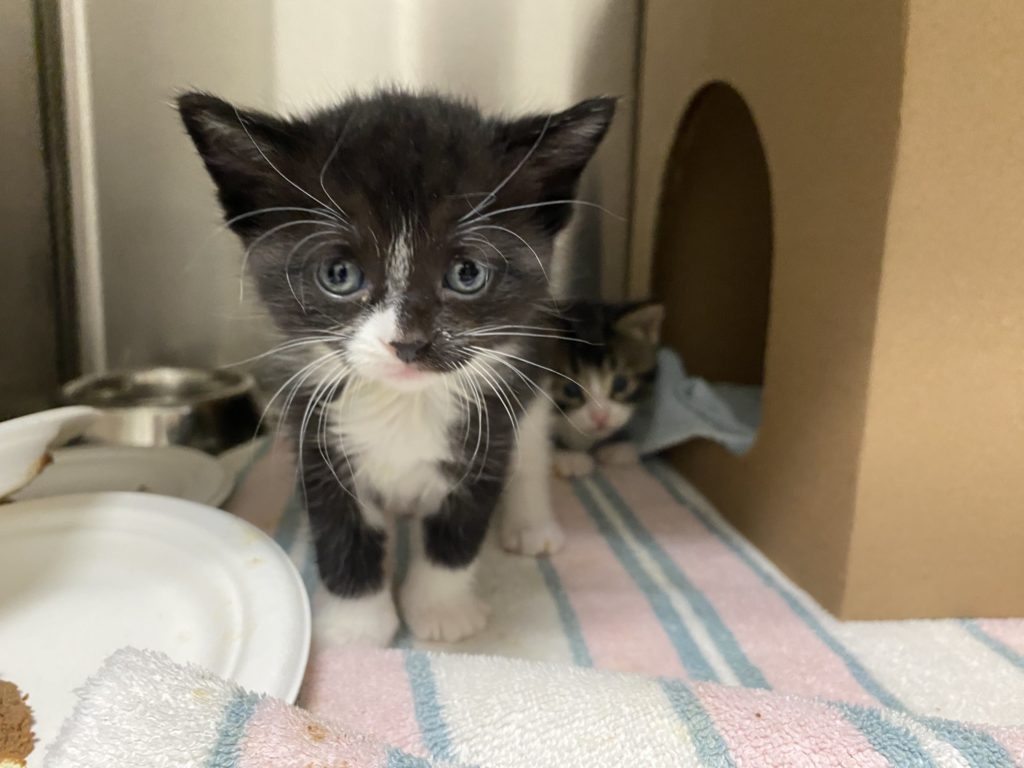May 4, 2023
Can Ottawa End Its Cycle of Homeless Cats?
It’s that time of year when we start to see a rising number of kittens and momma cats who need our help. During the winter months, we were taking in somewhere between 150 and 200 cats each month. During the spring and summer months, this increases by more than 100 cats monthly.
Each year, we see the same cycle of young, stray kittens who need shelter and care. It takes a community working together to end the cycle of homeless cats. Here are a few of the ways you can keep cats from becoming homeless and do what’s best for cats you find outdoors:
- Spay/neuter your pet cat. It’s always the first step. A cat who is sterilized will not make more kittens who need their own spay/neuter surgeries and forever homes.
- Keep your cat indoors. Sure, a cat who is sterilized won’t be adding more cats to the cycle, but we’ve talked at great lengths about why unsupervised access to the outdoors is a bad thing for cats. It may be legal, but that doesn’t mean it’s in the cat’s best interest.
- Acquire your cats from a responsible source. Free kittens are rarely free. Often, you’ll be faced with a hefty startup cost to set up the cat for a lifetime of good health. A spay/neuter surgery, microchip, health and behaviour exams, core vaccines, parasite treatments… the list goes on. All of this and more is included when you adopt from the OHS.
- Not every cat who is outdoors needs immediate help. I know this is confusing with our advice to keep cats indoors, but bear with me. Up to about eight weeks old, the best caregiver for a kitten is their mother. To give the kittens their best chance, before jumping into action, watch carefully for the kittens’ mom returning to care for them.
But what about an adult cat wandering around? Unless they’re injured or in a dangerous situation, they likely don’t need help right away. They may be a cat who is allowed to roam and they may be close to home. Bringing them to the OHS may unintentionally make them homeless, add to the shelter’s population and result in them taking away a spot in a home from a cat who doesn’t have a home. There are a few steps you can take to find out if the cat has a home or if they are truly homeless and need help. - Share what you know. Lovingly. We’re all in this together, and we’re all working out of a shared love for animals. We need people who care to spread the word about how families can keep their cats safe and prevent overpopulation, and it needs to come from a place of compassion and understanding. It’s easy to see a cat roaming outdoors and assume their owner doesn’t care about them, but those assumptions close the door to conversations that can help build a more humane and compassionate community.
It happens every year that we see an increase of cats and kittens over the summer, coming to us in need. Even so, I believe that Ottawa is going in the right direction and that our community cares deeply about the wellbeing of its animals.
There are more steps for us to take, and we are going to get there. Together.
Shaun Renton
Manager: Adoptions & Rehoming

